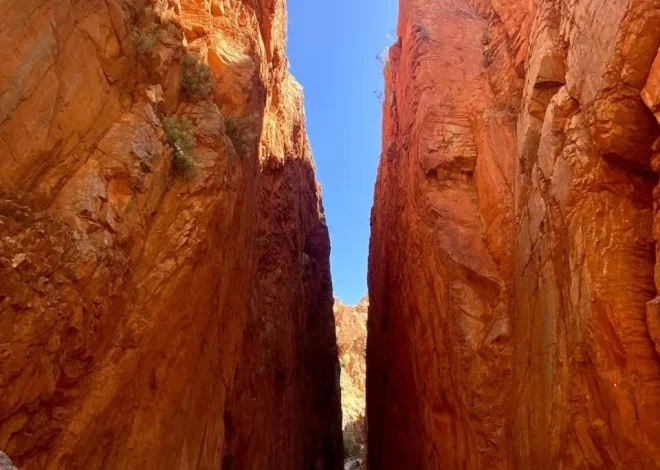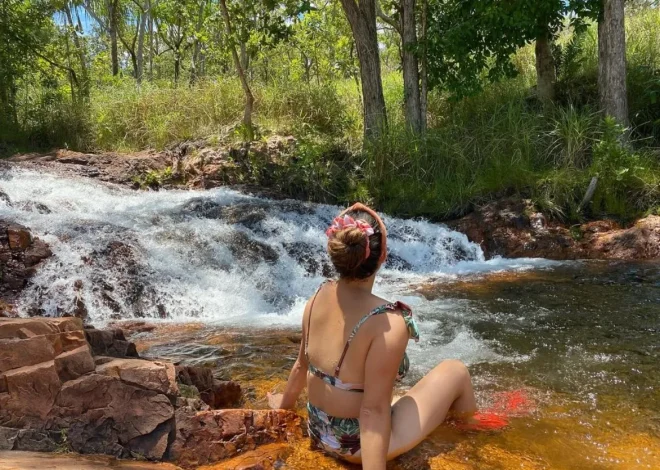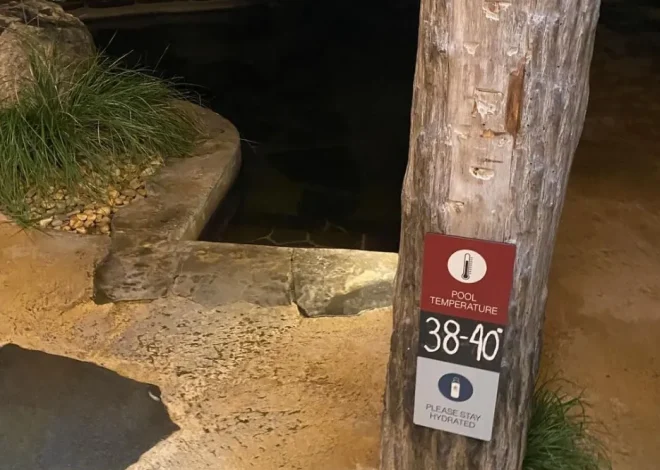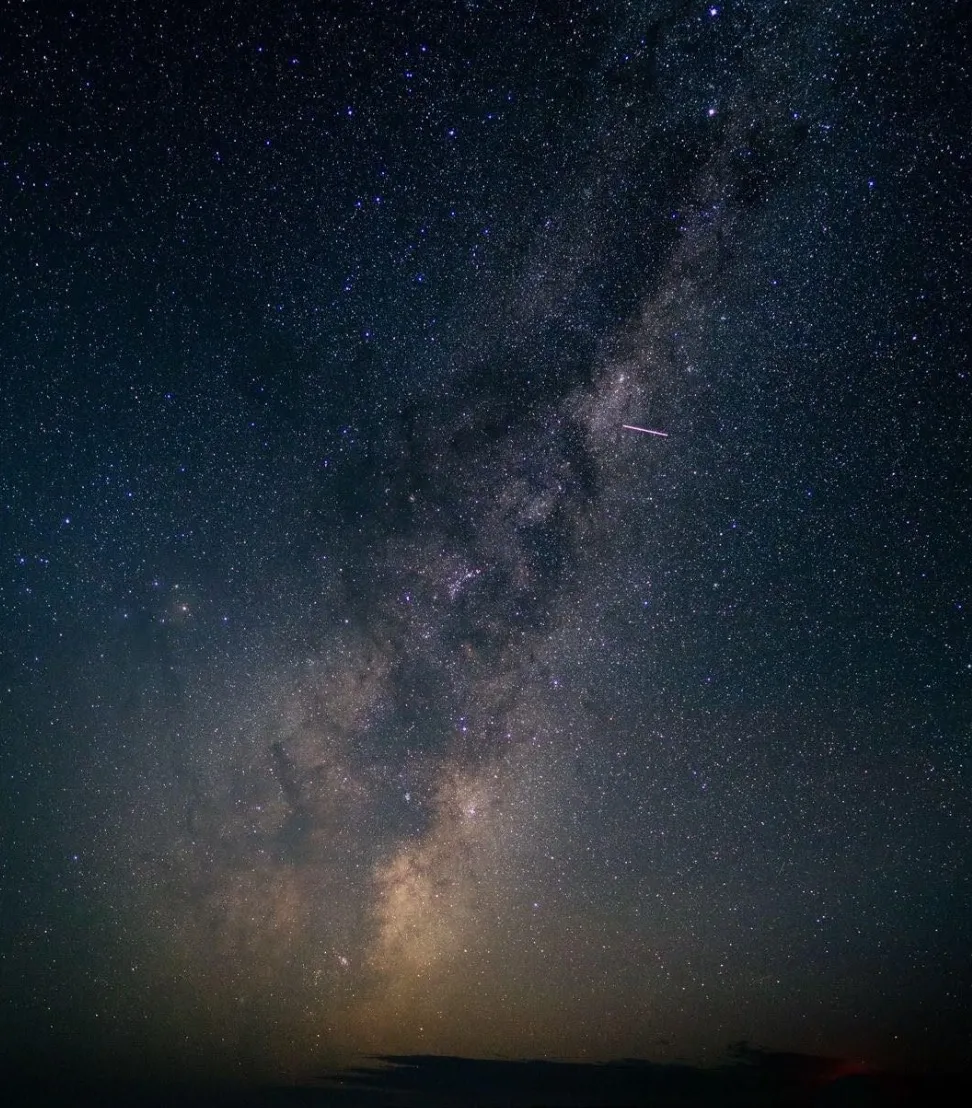
Stargazing Spots Along the Great Ocean Road
The Great Ocean Road is famous for its beautiful locations, stunning views and landmarks. But beyond its coastline and touristy attractions this route is also a stargazers paradise. As the sun goes down and the sky turns black the lack of city lights means you can see the stars like never before. The clear night sky, the mountains and coastline is the perfect backdrop to see the magic of the universe.
Night Sky
Stargazing on the Great Ocean Road is amazing. With no artificial light and no ambient light this is the perfect place to see star clusters, the brightest stars and even shooting stars on a dark night. On clear nights you can see the Sun, the closest star to us, set over the ocean and then the other celestial bodies appear. The Milky Way glows in the sky and you can see star clusters and constellations that are impossible to see in the city.
Best Times to Stargaze
Best times to stargaze are during new moon phases when the sky is at its darkest and the stars are at their brightest. Clear dark nights in autumn and winter are the best. During these seasons the night falls earlier so you have more time to enjoy the celestial wonders. No cloud cover and cooler temperatures also reduce atmospheric distortion so you get a sharper view of celestial events.
Optimal Seasons for Stargazing
Autumn and winter are the best time to stargaze on the Great Ocean Road. The air is crisp and the skies are often clear so the stars are brighter and more defined. Summer nights can also be good especially at places like the Twelve Apostles Marine National Park and Cape Schanck Lighthouse Reserve where the ocean views meet the night sky. The Southern Lights, or Aurora Australis, can be seen from these locations occasionally so you can add another natural wonder to your stargazing experience.
Weather
Weather is a big consideration when stargazing. Clear skies, no wind and low humidity is the best. Coastal weather can be unpredictable so check the forecast before you go. Even on nights with partial cloud cover you can get breaks in the clouds to see star trails and celestial events. Always bring extra layers, a thermos of hot chocolate and some camping gear to keep you warm during your stargazing adventure.
Best Stargazing Spots on the Great Ocean Road
Aireys Inlet
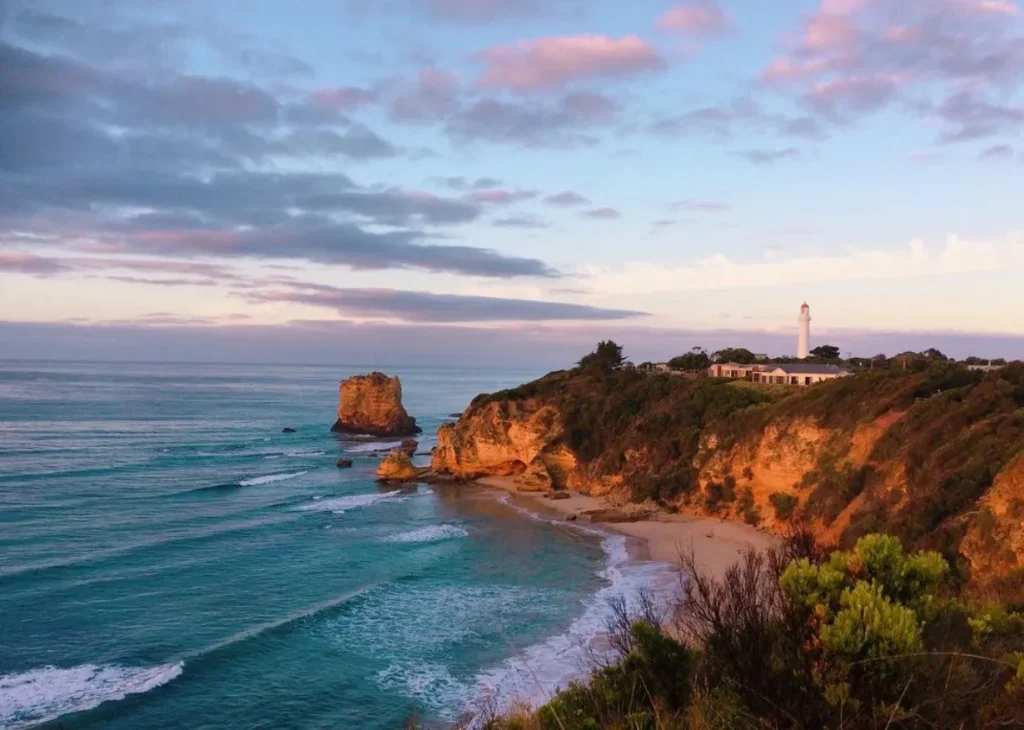
Aireys Inlet is the perfect spot to stargaze, with views of the entire sky from the clifftops and beaches. The Split Point Lighthouse is a historic stargazing spot and the area is relatively light pollution free so you can see star clusters and the Southern Cross.
Apollo Bay
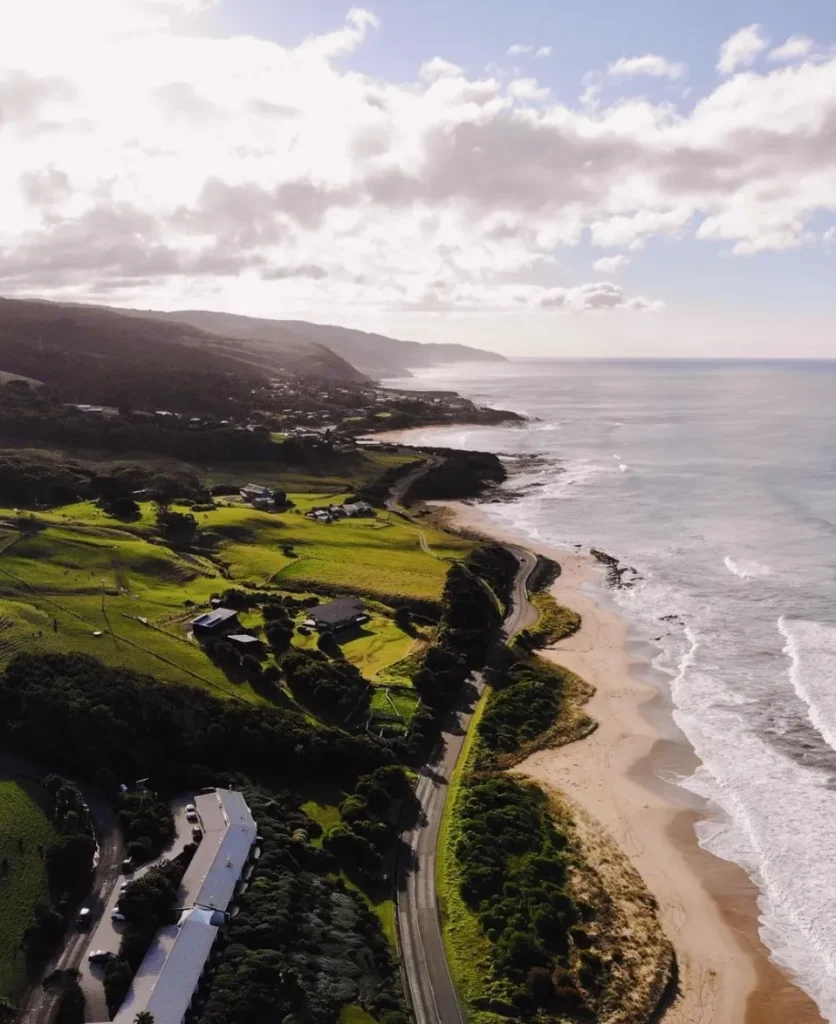
With ocean views and hills surrounding you, Apollo Bay is a peaceful spot to stargaze. Far from city lights the dark sky stargazing opportunities are endless. Lay on the beach or find a spot in the hills and watch the shooting stars and star clusters dance across the sky.
Cape Otway
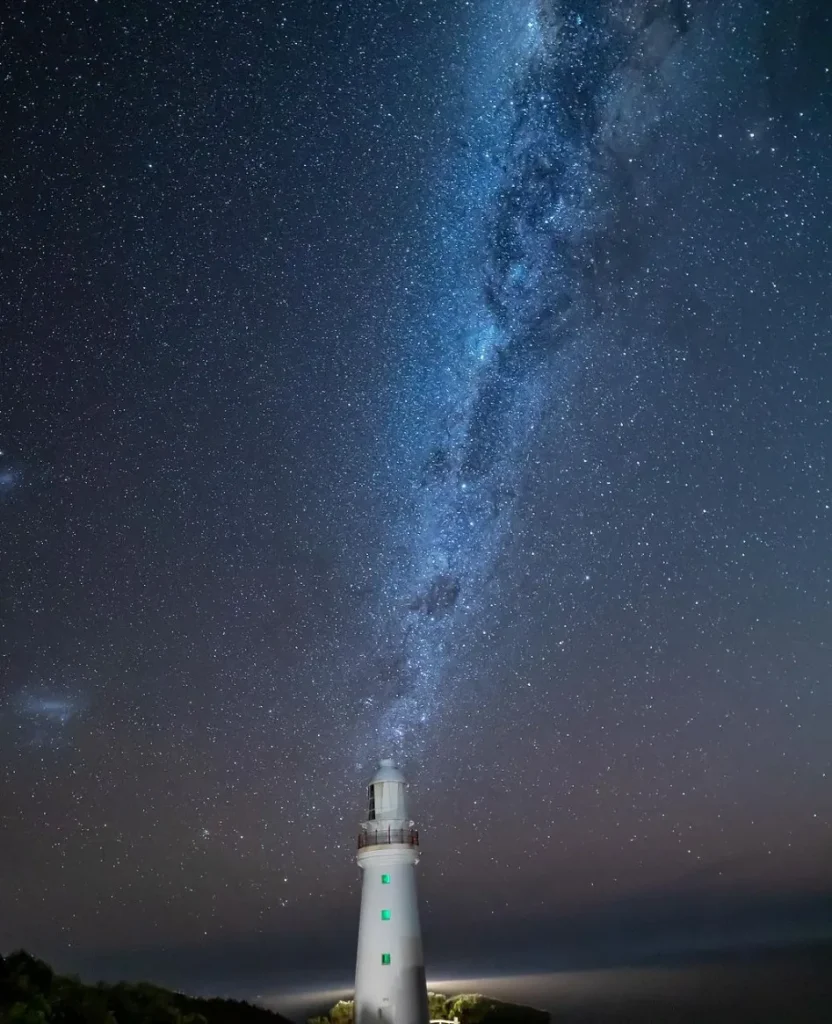
Cape Otway, home to the historic lighthouse, is a stargazing paradise. The lighthouse sits on the edge of rugged mountains and is a beacon against the dark night. On clear nights the Cape is a portal to the stars, where modern telescopes at local astronomy events will transport you into the cosmos.
Twelve Apostles Marine National Park
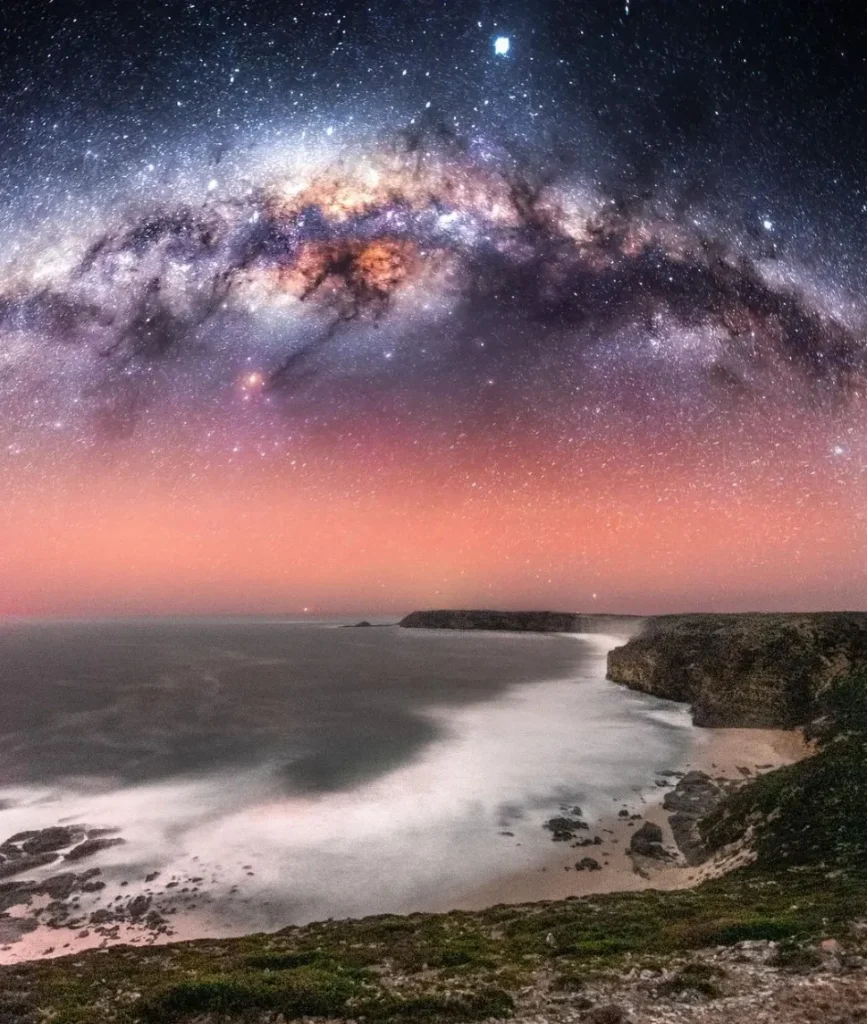
The Twelve Apostles rock formations are amazing to see during the day but at night they become a dramatic foreground for stargazing. The area is part of the Port Campbell National Park which has some of the darkest skies in the region. This stargazing spot has great locations to view the Milky Way, the Southern Cross and even the faint glow of the Southern Lights on rare occasions.
Port Campbell National Park
Port Campbell National Park is another stargazing hotspot along the Great Ocean Road. The rugged mountains and cliffs provide stunning views of the night sky. It’s a popular spot for amateur astronomers and photography enthusiasts to shoot star trails and the Milky Way against the coastal landscape.
Stargazing Tips and Essentials
What to Bring
For a stargazing trip to remember bring the following:
- Telescope or Binoculars: Modern telescopes or even a good pair of binoculars will make your stargazing experience even better. They will help you see details of the Moon, planets and star clusters.
- Red-Light Flashlight: A red-light flashlight will help you navigate without ruining your night vision.
- Warm Clothing and Blankets: Coastal nights can be cold so dress warmly and bring extra blankets.
- Camping Gear: Setting up at one of the designated camping spots will extend your stargazing adventure. Bring a tent, chairs and a bottle of wine to enjoy under the stars.
- Star Maps or Apps: Tools like Star Walk 2 or SkyView are essential for identifying stars, constellations and planets.
Apps and Guides
Using apps and guides can turn stargazing into a more fun and educational experience. These tools have info on celestial objects, constellations and real time data on celestial events. Here are some popular ones:
- Stellarium Mobile: A realistic view of the night sky in real time, based on your location.
- SkySafari: Info on celestial bodies and events.
- Dark Sky Finder: Find dark sky stargazing locations free from light pollution.
Safety Tips
Stargazing is generally safe but always be aware of your surroundings.
- Stay on Marked Trails: Always stick to the path to avoid accidents, especially in rough terrain like the Great Ocean Road’s cliffs and mountain tops.
- Bring a First Aid Kit: Accidents can happen so be prepared especially when stargazing in remote areas.
- Be Aware of Wildlife: The Great Ocean Road has nocturnal wildlife so keep a safe distance and respect their habitat.
Stargazing Events and Tours
Guided Stargazing Tours
Several tour operators along the Great Ocean Road offer guided stargazing tours. These 2 day Great Ocean Road tours have telescopes, expert guidance and info on the night sky. Whether you’re an amateur astronomer or just a curious traveller, these tours will give you a full stargazing experience in some of the darkest skies in Australia.
Astronomy Events
Annual events like the Great Ocean Road Astronomy Weekend or public events run by local astronomy clubs give you the chance to learn more about the stars. These events often have guest speakers, workshops and guided stargazing sessions using advanced telescopes.
Family Stargazing
Stargazing can be a real magic for families. Places like the Cape Schanck Lighthouse Reserve and Logans Beach are safe and accessible for stargazing. Many of these sites have accommodation nearby, family friendly lodges and campgrounds like Nightfall Camp so you can turn your stargazing trip into a mini break. Activities like searching for star clusters or spotting shooting stars can engage the kids and make it educational and fun.
Accommodation near Stargazing Spots
If you want to fully indulge in the stargazing experience, staying near the stargazing spots is the way to go. From luxury lodges to camping sites the Great Ocean Road has accommodation options for stargazers. Stay at places like the Star Cottage near Apollo Bay or one of the campsites in the Port Campbell National Park where you can step out of your door and into the night sky. Many accommodation options have stargazing equipment like telescopes or even guided night sky tours.
Here’s a table summarizing some of the best stargazing locations along the Great Ocean Road, including their key features, accessibility, and best times to visit:
| Stargazing Location | Key Features | Accessibility | Best Time to Visit |
|---|---|---|---|
| Aireys Inlet | Coastal views, historic lighthouse | Easy access, parking available | New Moon phases, Autumn |
| Apollo Bay | Ocean and hill views, tranquil atmosphere | Accessible by car, local amenities | Winter, clear nights |
| Cape Otway | Lighthouse, rugged mountains | Limited access, guided tours | Summer, early winter |
| Twelve Apostles Marine National Park | Iconic rock formations, ocean backdrop | Easy access, tourist facilities | All year, late evening |
| Port Campbell National Park | Rugged cliffs, dark skies, natural phenomenon | Parking available, open spaces | New Moon phases, clear nights |
Conclusion
Stargazing along the Great Ocean Road is a once in a lifetime experience. Beautiful locations, comfy accommodation and dark skies, its the perfect spot for both beginner and seasoned stargazers. Whether you’re spending the night under the stars at Cape Otway or taking a tour at the Twelve Apostles, the Great Ocean Road will be an experience you’ll never forget. So grab your telescope, bring a bottle of wine and get ready to be wowed by the night sky.
FAQs
What’s the best time to stargaze along the Great Ocean Road?
Autumn and winter, April to August, when the skies are clear and nights are longer.
Can I see the Southern Lights from the Great Ocean Road?
Yes, the Southern Lights, or Aurora Australis, can be seen from places like Cape Otway and the Twelve Apostles during solar activity.
Are there tours?
Yes, there are tours available with local operators who will bring telescopes and expert knowledge to help you stargaze.
What to bring for stargazing along the Great Ocean Road?
Telescope or binoculars, warm clothes, red-light flashlight, star maps or apps and camping gear if you’re staying overnight.
Are there family friendly stargazing spots?
Yes, places like Aireys Inlet and Logans Beach are family friendly and stargazing accessible.
